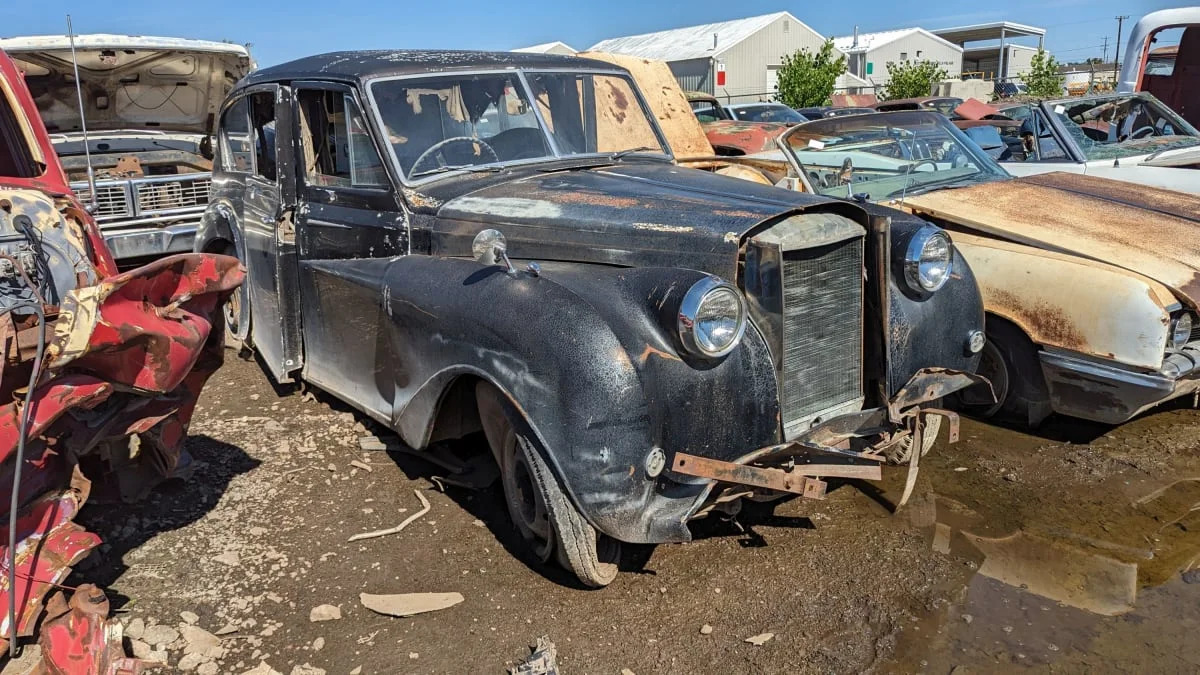Junkyard Gem: 1959 Princess DM4 Limousine

Austin was surprisingly successful selling cars in the United States during the early postwar years, thanks mostly to the little A40 Dorset (two-door) and Devon (four-door) saloons, and the Austin brand stuck it out here all the way through 1975. The Nash Metropolitan was built by Austin, the original Mini and Morris Marina were badged as Austins here, and a version of the BMC ADO16 was sold here as the Austin America. One Austin model wasn’t much seen on our side of the Atlantic, however: the A135 Long Wheelbase Princess. Believe it or not, a DM4 Limousine version of the A135 Princess now resides in a Denver-area car graveyard. Let’s check it out!
The Princess name has a long and bewildering history dating back to the 1947 A120, and it has been maddeningly intertwined with the Vanden Plas name as a means of further confusing everybody. The A135 Princess began life as an Austin-badged model in 1952, then the model name became the marque name for 1959. That means this car was sold new as a Princess DM4 Limousine. Starting in 1960, the A135 became the Vanden Plas Princess, and that’s the way it stayed until production ended in 1968.

The Princess name was also used on a luxed-up version of the ADO16 from the middle 1960s through middle 1970s, then on the miserable British Leyland Princess from 1975 through 1981. The Vanden Plas name stuck around on Jaguar XJs until 2009.

Queen Elizabeth II owned several DM4 Princesses, the best-known of which was a 1966 Vanden Plas Landaulette. John Lennon had an A135 hearse as well.

This one has spent far too many decades outdoors with open windows to be worth restoring, especially given that A135s not connected to famous people sell for modest sums even when in good condition.

It must have been glorious when it was new, though.

The biggest problem with fixing up one of these cars is the large amounts of wood used in their construction.

The paint shows some dramatic patina.

The engine is a 3.9-liter version of Austin’s reverse-flow pushrod straight-six, originally developed during the late 1930s for use in Austin trucks. The Austin Champ, designed during the 1950s as a homegrown counterpart of the original American military Jeep, used Rolls-Royce engines.

A GM Hydra-Matic automatic transmission was available as an option, but this car appears to be equipped with a column-shift manual. Limousine drivers in 1959 had to be capable of operating any sort of transmission smoothly.

The all-important Princess grille is stuffed into the back. Perhaps some ambitious 24 Hours of Lemons team will rescue this hulk and turn it into a road-race machine.







